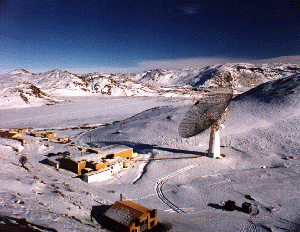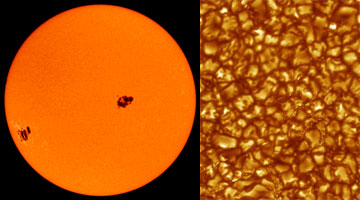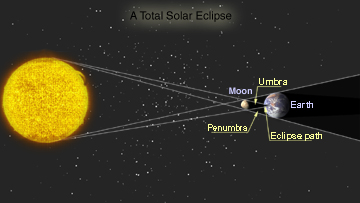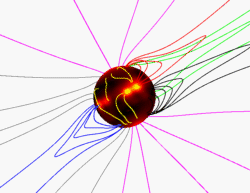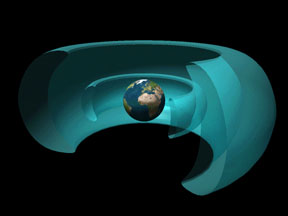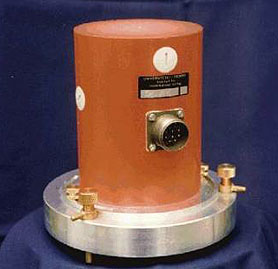
Image courtesy the Auroral Observatory of the University of Tromso, Norway.
Instruments & Techniques for Space Weather Measurements
Scientists use a broad array of techniques and instruments to make the measurements needed for space weather investigations.
Telescopic observations via spacecraft and ground-based observatories provide us with spectacular images of the Sun and the solar atmosphere. These observations are not confined to visible light, but range across the electromagnetic spectrum from radio wave and infrared (IR) images to ultraviolet (UV) and X-ray views. A technique called helioseismology allows us to probe the Sun's interior by watching pressure waves ripple across the photosphere. Coronagraphs create artificial eclipses which give us great views of the Sun's atmosphere. Spectroscopy allows us to study the elemental composition of the Sun and provides information about temperature and magnetic field strength.
The Sun emits various types of electromagnetic radiation and subatomic particles. Some types generate secondary cascades of particles when they crash into the gases in Earth's atmosphere. Radiation sensors, plasma wave detectors, and similar instruments on spacecraft and the ground measure the flux of protons, electrons, ions, neutrinos, and other types of radiation.
Optical techniques, broadly defined to include IR and UV "light", also aid studies of near-Earth "geospace". Images and spectroscopic studies help us understand the auroras, while extreme UV images from satellites reveal the structure of Earth's plasmasphere.
Techniques and instruments employing radio waves help us probe the electrically charged layers of Earth's atmosphere collectively referred to as the ionosphere. Radars and antenna arrays called riometers allow us to determine which radio waves pass through, get absorbed by, and bounce off specific layers of the ionosphere.
Magnetometers detect the orientation and measure the strength of magnetic fields. A network of ground-based magnetometers tracks Earth's magnetic field. Magnetometers aboard orbiting satellites monitor magnetic fields in near-Earth space; magnetometers on interplanetary spacecraft measure fields in deep space.






